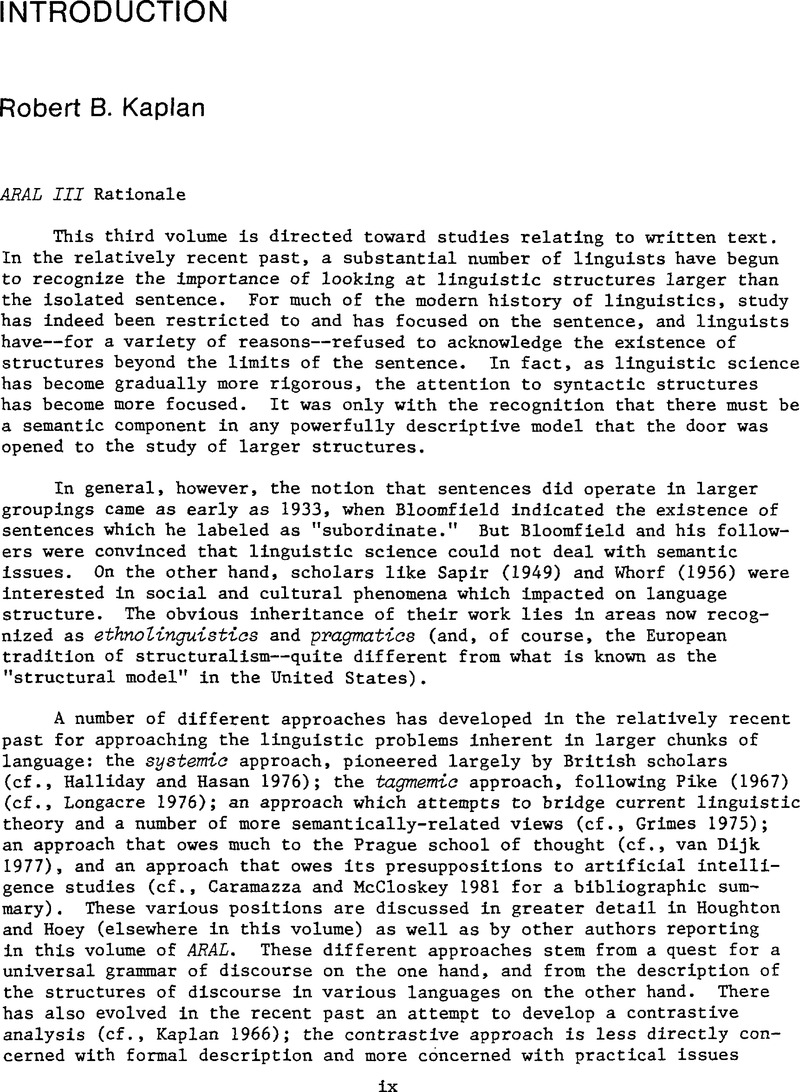No CrossRef data available.
Article contents
Abstract
An abstract is not available for this content so a preview has been provided. Please use the Get access link above for information on how to access this content.

- Type
- Introduction
- Information
- Copyright
- Copyright © Cambridge University Press 1982
References
UNANNOTATED BIBLIOGRAPHY
Caramazza, A. and McCloskey, M.. 1981. Theory and problems in psycholinguistics. In Kaplan, R. B. et al. (eds.) Annual review of applied linguistics: 1980. Rowley, MA: Newbury House. 71–90.Google Scholar
Kaplan, R. B. 1966. Cultural thought patterns in intercultural education. Language learning. 16.1–20. (Also in Croft, K. (ed.) 1980. Readings on English as second language for teachers and teacher trainees. Cambridge, MA: Winthrop.)Google Scholar
Longacre, R. E. 1976. An anatomy of speech notions. Lisse: The Peter de Ridder Press.CrossRefGoogle Scholar
Pike, K. L. 1967. Language in relation to a unified theory of the structure of human behavior. 2nd ed.The Hague: Mouton.CrossRefGoogle Scholar
Sapir, E. 1949. Culture, language, and personality. Berkeley: University of California Press.Google Scholar
van, Dijk T. E. 1977. Text and context: Explorations in the semantics and pragmatics of discourse. London: Longman.Google Scholar
Whorf, B. L. 1956. Language, thought, and reality. Ed. Carroll, J.. Cambridge, MA: M.I.T. Press.Google Scholar




